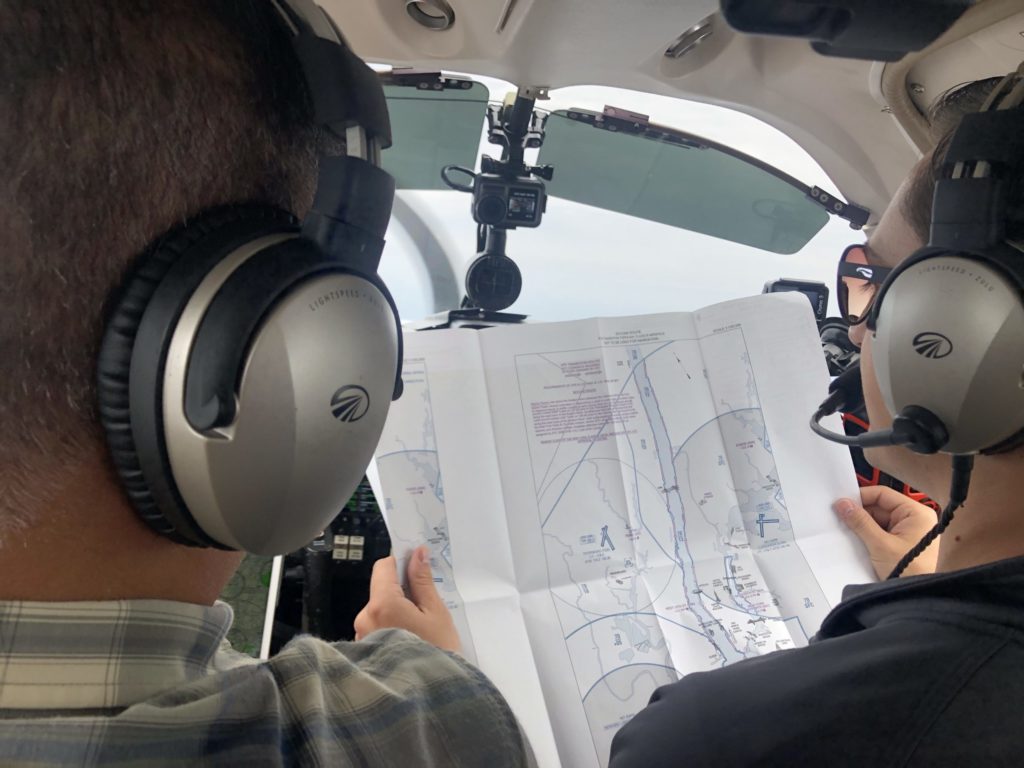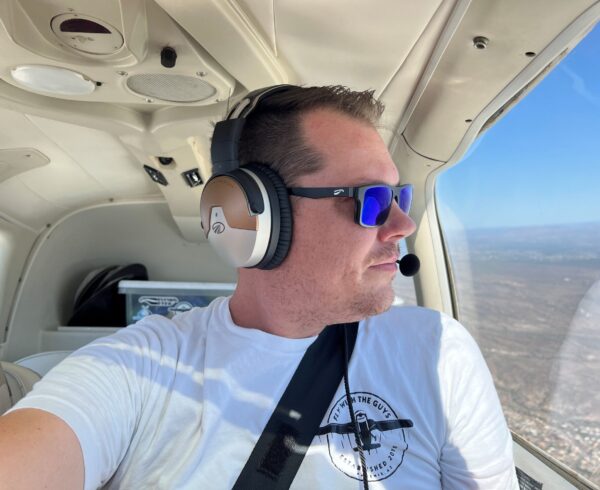Welcome to Going There, a new blog series where we present the how-to’s and highlights of flights to amazing places—the ones that are on your bucket list or should be. To kick off our series, we talked to pilot Josh Flowers, creator of the Aviation101 YouTube channel, about flying the historic Hudson River Corridor and seeing New York City from the air.
The area above and around New York City is a Class Bravo airspace, one of the busiest in the U.S, but Josh says flying the Hudson Corridor through New York is amazing, and not that scary if you do your homework and follow the rules. You’ll be flying a VFR corridor called the East River Special Flight Rules Area (SFRA) through this Class B airspace, passing between 4 major airports (Newark, JFK, LaGuardia and Teterboro) without talking to ATC, so preparation is key.
The first things you’ll need are the TAC for New York and the flight rules for the East River SFRA. (Josh’s TAC has the Special Flight Rules written out on the back.) He and his co-pilot went over both carefully before the flight. “We did a 20-minute briefing before we even got in the plane. We laid the chart out over the wing and laid out all the different points that we were going to hit along the way. We read through the entire procedure and made ourselves familiar with it. These procedures can be pretty intimidating when you first look at them—I was intimidated—but once you read through them, you can see that it’s all pretty straightforward. Basically, the FAA has made it easy for us.” You might want to consider having a co-pilot for this flight. Josh flew the corridor with another pilot, so one was able to fly, and the other pilot was able to review the chart and make sure they were following the rules.

The Hudson River SFRA is designed to keep private planes below commercial airspace, at an altitude of around 1,000 ft. (Class Bravo airspace begins at 1,300 ft and helicopters stay at 800 ft or below.). Aircraft must stay over the water. Northbound traffic flies along the east side of the river, and southbound traffic flies on the west side. Pilots are required to self-announce (aircraft type, position, heading, and altitude) on CTAF 123.05 at points listed in the SFRA rules, including the Alpine Tower, George Washington Bridge, USS Intrepid, Colgate Clock, Statue of Liberty, and the Verrazano Bridge.
Josh points out that you can fly higher than the VFR corridor if you plan ahead. “You just have to talk to ATC ahead of time and tell them you want to do the Skyline Tour of the Hudson River, which is actually a separate procedure, also laid out in a chart, and it puts you in a higher altitude.”
So how about flying in one of the world’s busiest airspaces? Josh says there are a lot of aircraft sharing the space, but it’s manageable if you have a good understanding of the area and landmarks. “If I’m at the north side of the river—like if I’m abeam of the USS Intrepid, which is about halfway up the river—then if I hear somebody announcing they’re down by Governors Island going the opposite direction, I don’t really care. But if I hear someone announcing they’re by Hudson Park going southbound, then I’m interested because they’re in my vicinity and they’ll be coming up pretty quick. It’s basically a pilot-controlled area. So, if you stay on your side of the river, stay within the altitudes, and announce, then it’s all good. Just do what the SFRA says.”
Josh tells us what it felt like to be there, “Of the flights I’ve done, this was the one that introduced the most sensory overload. You’re flying below the tops of the buildings, and you’ve got buildings on both sides. You’re wearing life vests because there’s nowhere to ditch but in the Hudson. You’ve got significant amounts of radio traffic around you, but at the same time you’re dying to take pictures out the window because this is beautiful. I briefed for this flight the most of everything I’ve ever done because I absolutely did not want to accidentally bust airspace. I know how busy this area is, and it would not only be embarrassing and illegal but also incredibly unsafe.”

Worth the prep and stress? Totally. “It was surreal crossing the Verrazano bridge and announcing that we’re beginning the Hudson River corridor northbound, and you look over to your left and there’s the Statue of Liberty. It was a cool moment looking at that and understanding what it represents, and then thinking ‘Wow, we have the ability to do this type of flying here in the U.S., and pilots in so many countries can’t even dream of the general aviation freedom that we have here.’ And then you see people jogging along the Hudson River, going about their day, and probably looking up at a plane and saying ‘Wow, it would be amazing to be up there right now.’ It throws you into a different perspective and it makes you think. It makes me want to do more.”
Watch what Josh has detailed in this clip. You can see the landmarks, starting at the Verrazano Bridge, through the corridor and out again in this exhilarating yet calming 4 and half minutes of flying.















I made this run up and down the River four times. Four of the most incredible flights I ever made and one hell of a way to impress your friends. Keep in mind if you ever do it on a weekend there will be more traffic for ATC to tell you about. They say multiple targets keep your eyes open.
The north part of the Hudson VFR Corridor would become part of the blanket TFR provisions regarding stadiums and number of people present during a NY Yankee baseball game at Yankee stadium, which is locacted in the Bronx just a bit southeast of the George Washington Bridge. Remember that this NOTAM says airspace is prohibited 1 hour before and 1 hour after game time. How the Locals Do It or should be anyway Whether your Going within the Class B or staying in the VFR Corridor…
Thanks for the memories. I flew up and down the Hudson many times and it never got old. Never did it on a day as clear as this video though. Wish I did. I hung up my wings a few years ago but loved every second I spent behind the yoke.
Awesome😀 Watched it twice!
I flew this corridor at night on the eve of 9/11 a few years ago in a helicopter from CT, and took my niece and sister. It was an amazing experience coming in from the north down to the Statue of Liberty (circled it 3 times close-up), then returned to the north. Just one of the most amazing flights I have done.
The dude in the backseat looks totally unimpressed …
Wow, this is fantastic. A very informative article for sure. Iam a very HAPPY CUSTOMER OF Lightspeed. Keep up the wonderful products. They are AWSOME.
I love the idea of demonstrating the trip both with an in depth article and the actual video of their trip. Used to fly the route over the Potomac before 9/11. Great training and confidence builder.
Magnificent and thanks for sharing. The only thing I worry about is that if non-pilots see this, especially in NYC, they might get needlessly concerned. You know how people too often react to what they don’t understand, and most know almost nothing about aviation. (Or rather they have gross misinformation about “small airplanes.”) Put that together with what happened 20 years ago and it could be a bad mix. Let’s hope that’s never an issue.
Thanks for starting this blog series… This is one of my favorite SFRAs that I take first time passengers quite often! Another favorite that you may consider for a future blog is Niagara Falls, which I fly pretty often.